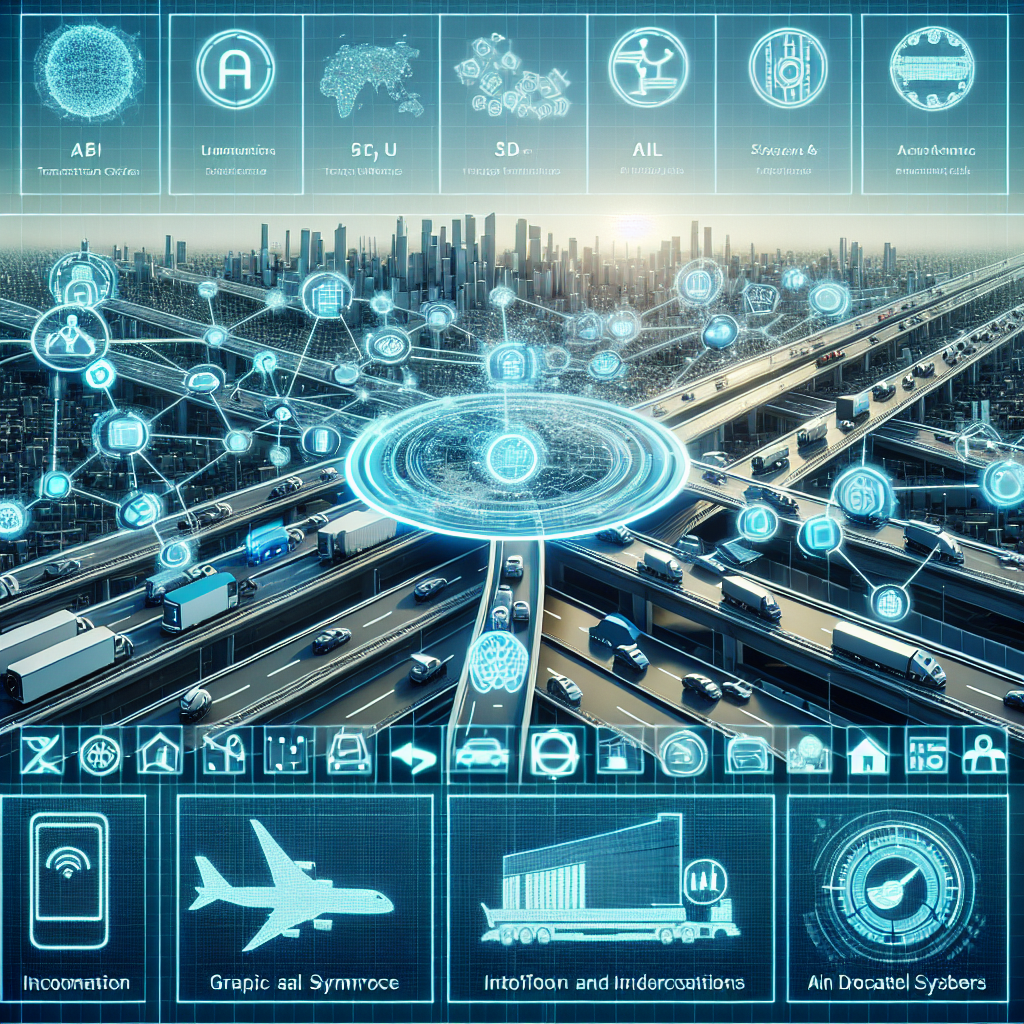Artificial Intelligence (AI) is revolutionizing the transportation industry by providing innovative solutions to enhance efficiency, safety, and sustainability. From autonomous vehicles to predictive maintenance systems, AI platforms are transforming the way we move people and goods. In this guide, we will explore the key components of implementing AI platforms in transportation and provide insights on how to maximize their potential.
Key Components of AI Platforms in Transportation
1. Data Collection and Analysis
One of the critical components of AI platforms in transportation is data collection and analysis. AI algorithms rely on vast amounts of data to make informed decisions and predictions. Sensors, cameras, GPS systems, and other IoT devices are used to collect real-time data on traffic patterns, road conditions, and vehicle performance. This data is then analyzed using machine learning algorithms to extract valuable insights and optimize operations.
2. Predictive Maintenance
AI platforms can predict when maintenance is needed for vehicles and infrastructure, reducing downtime and increasing efficiency. By analyzing historical data and sensor readings, AI algorithms can identify potential issues before they occur and schedule maintenance proactively. This predictive approach can save time and money by avoiding costly breakdowns and repairs.
3. Autonomous Vehicles
Autonomous vehicles are one of the most prominent applications of AI in transportation. AI algorithms power self-driving cars, trucks, and buses, enabling them to navigate roads, detect obstacles, and make decisions in real-time. Autonomous vehicles promise to increase road safety, reduce traffic congestion, and improve mobility for people with disabilities or limited access to transportation.
4. Traffic Management
AI platforms are used to optimize traffic flow and reduce congestion in urban areas. By analyzing real-time data from traffic cameras, sensors, and GPS devices, AI algorithms can predict traffic patterns, adjust signal timings, and recommend alternate routes to minimize delays. Traffic management systems powered by AI can improve the overall efficiency of transportation networks and enhance the quality of life for residents.
5. Supply Chain Optimization
AI platforms are transforming supply chain management by optimizing routes, scheduling deliveries, and managing inventory. AI algorithms can analyze historical data, demand forecasts, and real-time information to optimize logistics operations and reduce costs. By streamlining supply chain processes, AI platforms can improve efficiency, minimize waste, and enhance customer satisfaction.
6. Customer Service
AI platforms can enhance customer service in the transportation industry by providing personalized recommendations, real-time updates, and interactive chatbots. AI algorithms can analyze customer preferences, feedback, and behavior to tailor services and improve the overall customer experience. Automated customer service solutions powered by AI can reduce response times, increase satisfaction levels, and build brand loyalty.
Implementing AI Platforms in Transportation
To successfully implement AI platforms in transportation, organizations should follow these key steps:
1. Define Objectives and Use Cases
Before implementing AI platforms, organizations should clearly define their objectives and use cases. Whether the goal is to improve safety, reduce costs, or enhance customer service, organizations should identify specific areas where AI can add value and prioritize initiatives accordingly.
2. Assess Data Availability and Quality
AI algorithms require high-quality and reliable data to deliver accurate results. Organizations should assess the availability and quality of data sources, such as sensors, cameras, and GPS devices, to ensure that sufficient data is available for analysis. Data cleaning, normalization, and integration may be necessary to improve data quality and consistency.
3. Select AI Technologies and Partners
Organizations should evaluate different AI technologies, such as machine learning, deep learning, and natural language processing, to determine the best fit for their transportation needs. Additionally, organizations should consider partnering with AI vendors, consultants, or research institutions to leverage expertise and resources in implementing AI platforms.
4. Develop Proof of Concepts
Before scaling AI platforms, organizations should develop proof of concepts to validate their effectiveness and feasibility. Proof of concepts can help organizations test AI algorithms, evaluate performance metrics, and identify potential challenges before full deployment.
5. Pilot Projects
Organizations should conduct pilot projects to test AI platforms in real-world scenarios and gather feedback from stakeholders. Pilot projects can help organizations assess the impact of AI on transportation operations, identify opportunities for improvement, and demonstrate ROI to decision-makers.
6. Scale Implementation
Once pilot projects are successful, organizations can scale AI platforms across transportation operations. Organizations should monitor performance metrics, collect feedback from users, and continuously optimize AI algorithms to maximize their impact and value.
Frequently Asked Questions (FAQs)
Q: What are the benefits of implementing AI platforms in transportation?
A: Implementing AI platforms in transportation can provide numerous benefits, including improved safety, increased efficiency, reduced costs, enhanced customer service, and sustainable practices.
Q: How can AI platforms improve traffic management?
A: AI platforms can improve traffic management by analyzing real-time data, predicting traffic patterns, adjusting signal timings, and recommending alternate routes to reduce congestion and delays.
Q: What are the challenges of implementing AI platforms in transportation?
A: Challenges of implementing AI platforms in transportation include data quality and availability, regulatory compliance, privacy concerns, cybersecurity risks, and workforce readiness.
Q: How can organizations measure the impact of AI platforms in transportation?
A: Organizations can measure the impact of AI platforms in transportation by tracking key performance indicators, such as safety incidents, on-time performance, cost savings, customer satisfaction, and environmental impact.
Q: What are the future trends of AI in transportation?
A: Future trends of AI in transportation include the widespread adoption of autonomous vehicles, the integration of AI with IoT devices, the emergence of smart cities, and the development of personalized transportation services.
In conclusion, AI platforms are transforming the transportation industry by providing innovative solutions to enhance efficiency, safety, and sustainability. By leveraging AI technologies, organizations can optimize operations, improve customer service, and drive business growth. Implementing AI platforms in transportation requires careful planning, collaboration, and continuous optimization to maximize their potential and deliver value to stakeholders.

